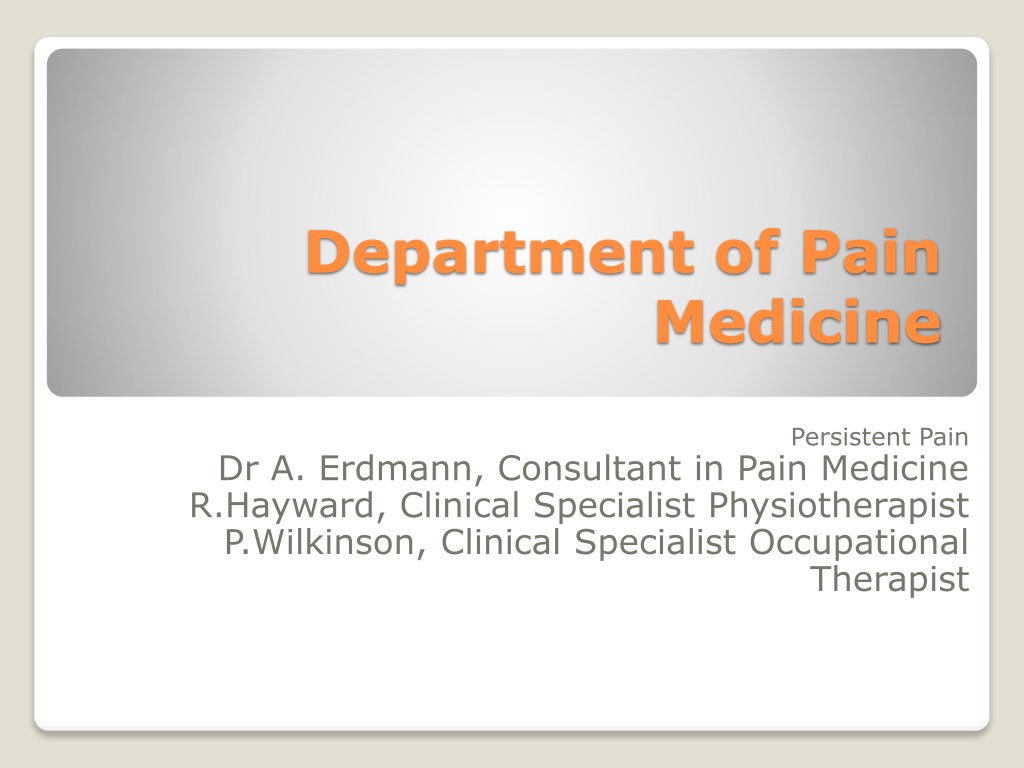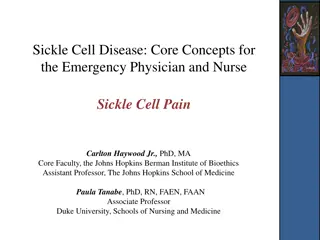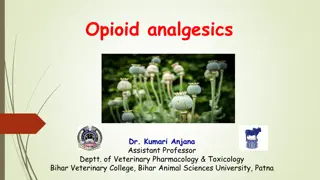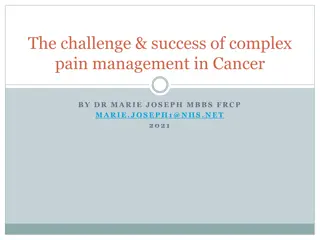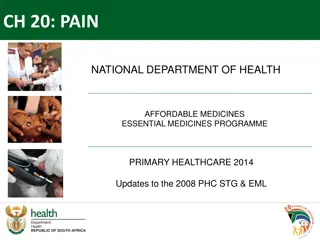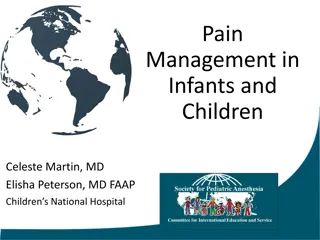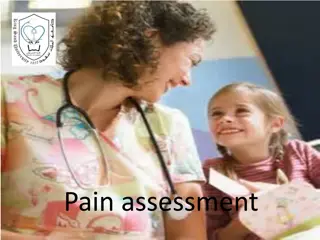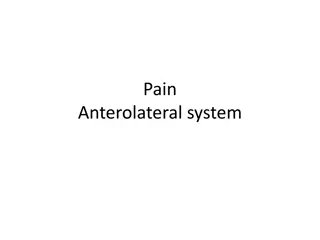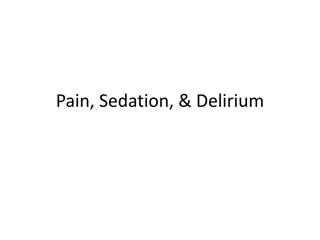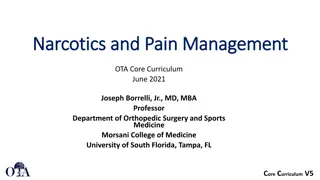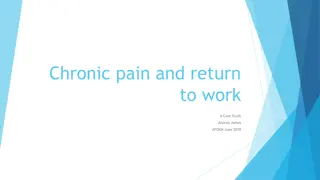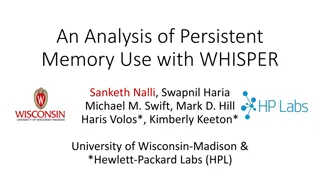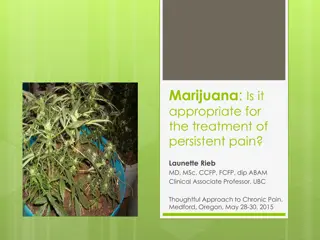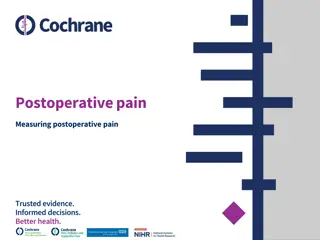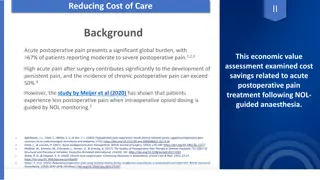Understanding Persistent Pain: Challenges, Strategies, and Interventions
This collection of images and text delves into the challenges faced when treating individuals with persistent pain, covering themes like acceptance, change, and resources. It explores the bidirectional association between stress, distress, and pain, and provides insights into the complex nature of pain experiences. The material also touches on the impact of persistent pain on various aspects of life and offers a case study on fibromyalgia for deeper understanding.
Download Presentation

Please find below an Image/Link to download the presentation.
The content on the website is provided AS IS for your information and personal use only. It may not be sold, licensed, or shared on other websites without obtaining consent from the author. Download presentation by click this link. If you encounter any issues during the download, it is possible that the publisher has removed the file from their server.
E N D
Presentation Transcript
Department of Pain Medicine Persistent Pain Dr A. Erdmann, Consultant in Pain Medicine R.Hayward, Clinical Specialist Physiotherapist P.Wilkinson, Clinical Specialist Occupational Therapist
From the floor What are the challenges for you when seeing people with persistent pain? Any themes/topics to cover in this part of the session?
Exploration about what we do and how we do it The issue of acceptance and change Resources to use with patients In brief
Ask the question difficult consultation what did the person say? How did you feel afterwards? Impact of pain chronicity, uninvited guest Association between stress, distress and pain is bidirectional What is it like having persistent pain?
https://www.youtube.com/watch?v=ZUXP qphwp2U Pain and me
The Persistent Pain Cycle Persistent Pain Time off work, money worries, relationship concerns Being less active Loss of fitness, weak muscles and joint stiffness Sometimes the arrows can also go anti clockwise as well. For example - time off work can lead to negative thinking fear of the future - can lead to stress, fear etc Negative thinking, fear of the future, depression/ mood swings Create no go lists of things you cannot do Weight gain/loss Sleep problems/ tiredness/fatigue Stress/fear/anxiety/anger/frustration www.paintoolkit.org Sheffield Persistent Pain, 2019
Pain is complex and a multi-system experience (biopsychosocial) People rarely present with just one issue when pain involved Peoples strategies often work short term, but make the situation worse long term. What we all know
What other information would you like to ask Susan? What else would you like to include as part of your assessment? How would you formulate this case? What may be part of your intervention? Case study -fibromyalgia
Group feedback/discussion Your ideas
How Do You Deal With Pain Now? Swing between the two Resign to it (feel overwhelmed and don t know where to start) Resist it (ignore the pain keep going or pushing through)
Other factors Past experiences Information on Condition Family/Work Circumstances Think If I start a job I need to finish it I have to . / I should Others expects me to Others don t understand It s my job . Feel Anxious Guilty Stressed Frustrated Angry Sad,depressed Physical Sensations & Symptoms Muscle tension Increase in Pain & Fatigue Reduced fitness Adaptive movement Sensitisation of the nervous system Do Behaviours Pushing through pain Rushing / not taking breaks Saying yes / not saying no Ignoring your pain, Taking more medication Catching up on a better day Unawareness of fitness trying things unfit for Using the body in a changed way Avoiding normal movement Not communicating to others
Other Factors Past Experiences Information on Condition Family/Work Circumstances Think If I do it will pain & damage There s something seriously wrong I can t .. Others don t understand Feel Anxious Guilty Stressed Frustrated Angry Physical sensations & Symptoms Muscle tension Increase in Pain & Fatigue Reduced fitness Adaptive movement Sensitisation of the nervous system Do Behaviours Spending lots of time inactive Lying down a lot / staying in bed Taking long rests Avoiding activities of daily living/personal care Watching out for the pain Unawareness of fitness Using the body in a changed way Avoiding normal movement Not communicating to others Sad low .depressed
Helps the person make the links between their thoughts, feelings, emotions, behaviour and physiological state. Offers the person and us a way in to help examine thoughts as useful/helpful OR NOT! Provides the person with increased insight regarding choice/control in relation to their behavioural responses. Can develop ways to manage physiological responses too, to reduce these. E.g. breathing techniques. Work with what the person wants to address their functional goals So what does this help us with?
Pain Management -What we aim to do 1) Education, (understanding) commonality, reassurance, relevance of self-management (shift from biomedical model to the biopsychosocial) 2) Validate pain experience, believe, space to tell story (alliance, co-partnership approach) 3) Establish what could change, goals, motivate, sow seeds of hope (acceptance) 4) Assistance with change targeted therapy interventions No one size fits all solution, and non linear process
Process of Change The relationship blog, 2018
Focus on recovery plans Being clear about your current limitations Being open to new ideas Increasing activity MIND BODY Improving confidence with self management strategies Building fitness with graded activity & exercise Doing things important to you & moving towards goals Establishing manageable activity levels Balancing activity, rest, sleep with pacing strategies Managing stress & building up coping skills Susan s road to recovery
Clinical specialist nurses x2 Clinical Specialist Occupational therapist Clinical specialist Physiotherapist(s) Consultant Clinical Psychologist Consultants in Pain Medicine Administrative support MDT -Different professional roles in team
Awareness around adaptive movements Restore optimal movement patterns Exercise prescription Pacing exercise Managing muscle tension Flare up management Signposting to community exercise schemes Physiotherapy- Increasing Activity Despite Pain
Emphasis on occupational functioning in key roles Assessment covers self-care, leisure and productivity occupations Agreeing occupational goals for change is crucial Will, Skill and Drill Vocational specialist staying in, getting back to work. Occupational therapy the doing stuff of life
Difficulty Recommendations/goals Link difficulties to occupational performance issues
Finding the bridge Establishing what matters to the person Despite the pain, what do they want to get back to doing? Promoting agency in recovery Lightbulb moments in therapy/consultations
Use metaphors about being stuck and making decision to change Ask about previous LIFE - tough issues and how they coped Recognise that staying stuck is an option but one with consequences Encourage person to talk about what they see these as the smallest goal to them Cheerlead, validate any positives Moving forward?
Explain Pain D.Butler &L.Moseley Neuro orthopaedic Institute Look on Youtube for some of Lorimer s lectures regarding pain. Research shows that clinicians often underestimate what patients can understand regarding their pain and the science behind it.
Resources Understanding Pain in less than 5 minutes and what to do about it. https://www.youtube.comwatch?v=C _3phB93rvI Ted talk Lorimer Mosely-Why Things Hurt https://www.youtube.com/watch?v=g wd-wLdIHjs
Pain Resources Using different media can help with engagement and insight. http://princessinthetower.org/ https://www.paintoolkit.org/ https://www.tamethebeast.org/ https://www.bodyreprogramming.org/
